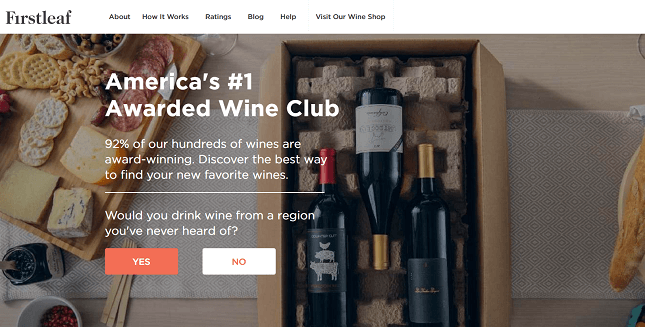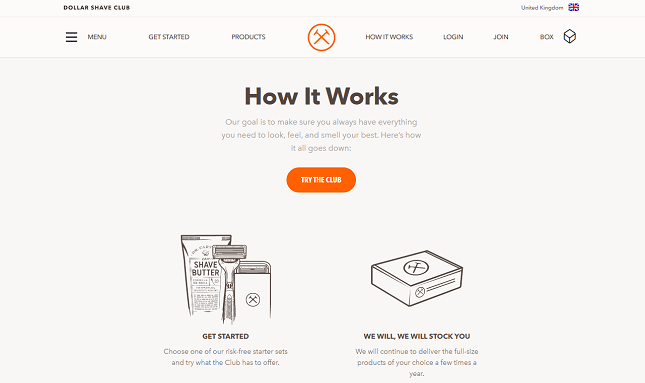14 Different Types Of Ecommerce Businesses
Our independent research projects and impartial reviews are funded in part by affiliate commissions, at no extra cost to our readers. Learn more
We look at types of ecommerce businesses by revenue model, business model, and website type
Modern technology has made it easier than ever to set up shop online. Whether you’re a side-hustler or a serious seller, there’s a platform to help you achieve your goal.
But what exactly should your goal be? What kind of ecommerce business do you want to have?
At Website Builder Expert, it’s our mission to not just help people get online, but to help them make a success of it once they’re there. And any successful ecommerce business starts with a successful plan, and a big part of that is knowing what your options are.
When it comes to looking at the types of ecommerce businesses, we first need to decide how to categorize them. Never a site to do things by half, we’ve done this three different ways:
- By business model
- By revenue model, and
- By the type of ecommerce website
Let’s take a look:
Ecommerce Business Models
When we look at ecommerce businesses, they typically take the form of one to two of these four different business models, depending on who is doing the buying and who is doing the selling. Like all good things in business, they crunch down nicely into three character acronyms:
1. Business-to-Business (B2B)
A B2B ecommerce is a business that is selling to another business. This could be a physical product, like raw building materials, or a service, like a corporate lawyer. It could also take the form of a digital product or service.
2. Business-to-Consumer (B2C)
As we are the consumers, this is the model used by most of our favorite brands. From fashion to furniture, gym memberships to wine subscriptions (more on those later), most of the stuff we buy for both ‘needs’ and ‘wants’ comes from a B2C brand.
3. Consumer-to-Consumer (C2C)
With consumer-to-consumer selling, there’s no business involved at all, and it’s usually a pretty casual setup. Think of a garage sale, or a platform like eBay.
4. Consumer-to-Business (C2B)
This is where a consumer sells their services to a business. Freelancers are the perfect example of this.
Ecommerce Business Revenue Models
So now we’ve looked at the different ecommerce business models, it’s time to look at the different ways they can actually make money. Here are the key ecommerce revenue models:
1. Dropshipping
With dropshipping, the business or individual ‘sells’ products on their website which they don’t actually make or own. They are packaged and distributed by the third party company, and the owner(s) of the dropshipping site never come into contact with a single product – they just take a small cut from the person or business who is actually making and distributing it.
Dropshipping can be lucrative and very successful. Take Wayfair, for example. Wayfair is a popular ecommerce furniture store, and a dropshipping site.

That said, dropshipping is a super competitive space now, so don’t enter into it thinking it’ll be a quick and easy way to make your fortune.
How to Start a Dropshipping Company – Our complete guide to making a success of dropshipping, and avoiding all the common mistakes. Contains advice from dropshipping pros.
2. Subscription
Subscriptions used to be pretty much reserved for magazines and newspapers, but just when you thought they were on their way out, they came back with a real bang in the form of subscription boxes. So big, in fact, that the subscription box market grew by more than 100% every year from 2013 to 2018.
Subscription boxes all work slightly differently, but basically involve signing up to receive a different type of a product that you like each month.
FirstLeaf is a subscription service for wine lovers. Each month, FirstLeaf’s wine experts scour the globe to deliver unusual and award-winning bottles of wine to their subscribers from regions they may never even have heard of.

There are book club subscriptions, coffee subscriptions, beauty subscriptions… you name it, you can subscribe to it. Subscriptions are a great way to retain customers, and to be able to predict how much stock you’ll need at any given time.
How to Start a Subscription Box Company – A step-by-step guide full of advice from entrepreneurs who have built a successful subscription box company from the ground up.
3. Private labeling and manufacturing
Any business or individual doing private labeling and manufacturing is one that is basically just carrying out all the presale stages in-house. That’s to say they’re making, packaging and then selling the goods directly to the end customer.
It sounds like a rather grand and technical term, but lots of small businesses – or small side hustles – fit this mould. An example would be a bakery selling homemade cakes to order.
4. White labeling
Companies operating on a white labeling business revenue model rebrand (or ‘label’) products purchased from a manufacturer, and sell them on as their own products.
Sounds kind of sketchy, right? Well actually it’s a lot more common – and legit – than it sounds. In fact, it’s something many big names use.
Dollar Shave Club, for example, is like the poster child of white labeling businesses. By taking a decent, affordable razor, and taking just a small margin to repackage and distribute it, Dollar Shave Club has become a huge success among women tired of overpaying for pink plastic razors.

It’s also a subscription box service, neatly straddling two great revenue models – nice work, Dollar Shave Club!
How to Sell Makeup Online – White labeling is a popular model in the cosmetics industry. If you’re thinking about selling makeup online, read our guide to see if this is the right way to go.
5. Wholesaling
A wholesaler acts like a middle man between a manufacturer and a retailer. They turn a small profit for selling the goods on to the retailer. Not all retail operates on this basis, but it’s probably more than you’d think. Wholesalers provide a way for the retailer to be really reactive about how much stock they need or want depending on what’s flying off the shelves, leaving the manufacturer to handle the logistics (especially if the manufacturer is based overseas).
This in turn means the wholesaler has to be the one to take on the risk of ordering a lot of stock in advance, based on what it predicts its retailers will want to buy. If it goes well, it can be smooth and lucrative, but it’s certainly a tough balancing act!
6. Rent and loan
With a business operating on a rent and loan revenue model, the customer is only paying for use of their product or service, rather than to buy it outright. An obvious B2C example is any car rental place, but there are also some more creative C2C options popping up.
Airbnb needs no introduction, but there’s also Fat Llama, a platform for consumers to rent out their gadgets, such as camera lenses, drones and power washers, to other consumers. With the top renters earning several thousand dollars a month, there’s clearly a huge market for it.

7. Freemium
A freemium payment model is one that you typically only see used by digital products. With a freemium business model, you can sign up to a free version of the product, which has reduced functionality.
While the hope is that you’ll sign up for a premium plan at some point in order to access the extra features, you could legitimately stay on the free version for as long as you want. There’s no real variable cost associated with these digital products (or at least, only a very small one), and the paying customers ensure the company is still turning a profit.
Spotify is a classic example of a business operating on a freemium revenue model. Users on the free Shopify plan will have their music occasionally interrupted by adverts. Not a problem for a casual user, but any serious music-lover will quickly upgrade for the convenience of uninterrupted listening.

Types of Ecommerce Websites
Okay so now we’ve looked at the different kinds of ecommerce business and revenue models, and now it’s time to look at the last factor at play; the type of website they’re selling through.
1. Individual brand website (one seller)
A vendor-specific website is a dedicated website which only sells the goods or services of one individual, or one business. Most ecommerce websites fall into this category.
Adidas, a sportswear brand, has a dedicated website selling only Adidas products:

Building an online store might seem like something reserved only for big brands like Adidas, but ecommerce website builders have made this technology available to everyone – even small sellers on a tight budget, and without any technical experience. So while you may prefer to dabble in online marketplaces first (which we’ll get to in a second), we definitely recommend new sellers build their own online store with one of these tools, too.
Ecommerce Website Builder Comparison Chart – An at-a-glance look at the best ecommerce website builders for your venture.
How to Build an Online Store – We’re here to walk you through the process of setting up shop online, from choosing
What is an Ecommerce Website: We explore how to design, run, and safeguard an ecommerce website in 2023.
Ecommerce Content Marketing: What is content marketing for ecommerce? We’ve written all about how your ecommerce business can reap content marketing’s myriad rewards.
2. Online retailers (a select number of sellers)
Online retailers bring together products from separate vendors under one online roof. The online retailer has control over which vendors it brings together in this way. Often, the online retailer will also take ownership of the product photos and descriptions to keep everything looking nice and pulled together.
Macy’s is a perfect example of this. Here’s a selection of the Adidas products they carry online:

Macy’s has total control over which products it stocks from which vendors, and how it displays them. It also holds the stock, and ships it to a customer when the purchase is made.
Amazon is probably the most famous online retailer, although it’s fair to say it has quite a different vibe to Macy’s. Rather than a curated selection of sellers, Amazon opts for quantity and convenience – and hey, it’s clearly working for them!
Amazon, however, is not to be confused with Amazon Marketplace, which works a little differently, and brings us nicely onto our third type of ecommerce website: marketplaces!
3. Marketplaces (multiple sellers)
Finally, there are marketplaces, like Etsy and eBay. These marketplaces impose some restrictions on what can be sold, and will step in if there’s a dispute between vendor and customer, but otherwise vendors pretty much get free reign.
Types of Ecommerce Businesses: Roundup
As you can see from this post, there are plenty of different ways to categorize ecommerce businesses. What’s more, quite often ecommerce businesses cross over into two or more different models.
Here’s a quick summary of the types of ecommerce businesses out there according to each different category:
Here are the different ecommerce business models:
- Business-to-Business (B2B)
- Business-to-Consumer (B2C)
- Consumer-to-Consumer (C2C)
- Consumer-to-Business (C2B)
Here are the different ecommerce revenue models:
- Dropshipping
- Subscription
- Private labelling and manufacturing
- White labelling
- Wholesaling
- Rent and loan
- Freemium
Here are the different types of ecommerce website:
- Individual brand website (one seller)
- Online retailers (select number of sellers)
- Marketplaces (multiple sellers)
The ecommerce world is an exciting and fast-evolving one. We’ll be sure to keep this page updated with any new trends we spot, but in the meantime, let us know if you think there’s anything we’ve missed – just pop a comment below!





4 comments